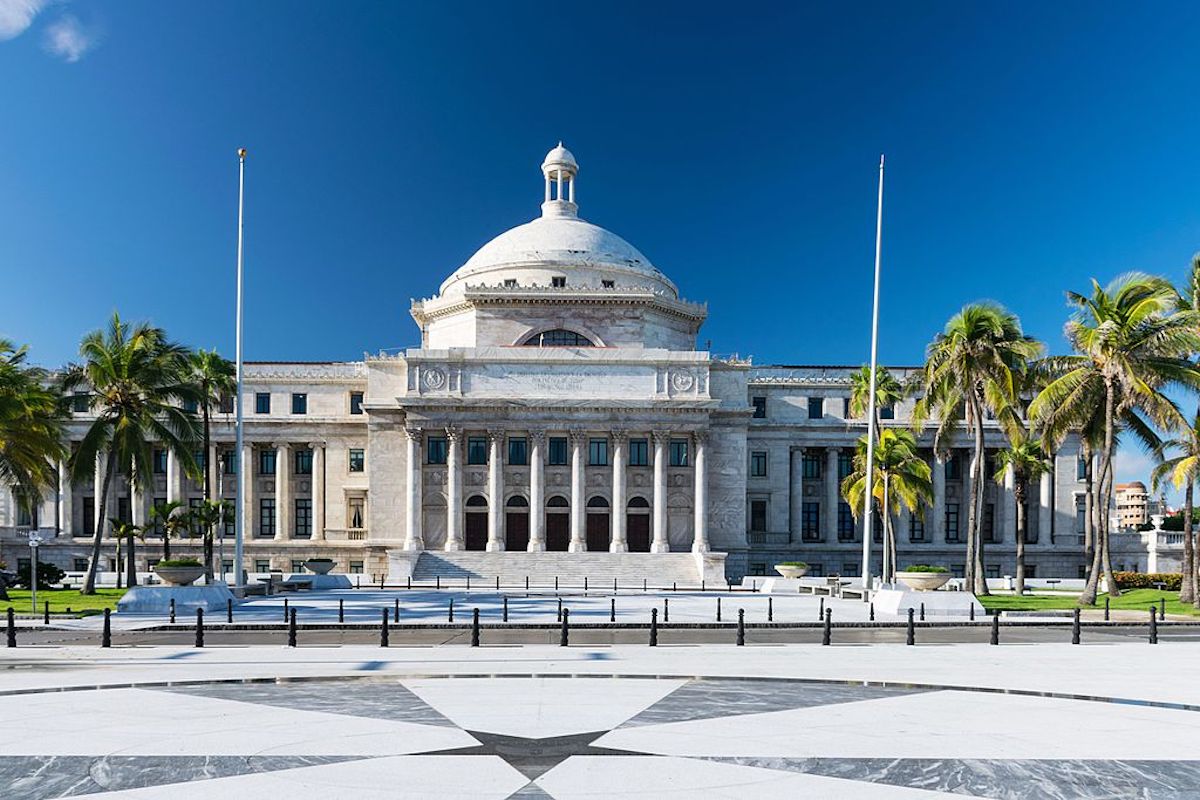

Puerto Rico’s Capitol building (Brad Clinesmith)
By DÁNICA COTO, Associated Press
SAN JUAN, Puerto Rico (AP) — A framework that outlines how Puerto Rico will restructure at least $35 billion in public debt and more than $50 billion in public pension liabilities threatens a 10% cut to certain public pensions if no agreement is reached with retirees.
The amended plan of adjustment of 233 pages was filed late Monday in U.S. court by a federal control board that oversees Puerto Rico’s finances and was created by Congress to lift the U.S. territory’s government out of bankruptcy.
The plan includes a proposed cut of up to 8.5% to monthly pensions of at least $1,500. That has long been a point of contention between the board and the governor, who has repeatedly said he would not approve such cuts.
Board Chairman David Skeel called the plan “a milestone for Puerto Rico’s recovery, stability, and prosperity. This plan substantially reduces the burden of debt payments on future generations, stabilizes and protects pensions that have been mismanaged for so long, and affirms the collective bargaining agreements of government workers.”
The board said that if the proposed pension cut is rejected, it would return to the original proposal of imposing a 10% cut on monthly pensions of at least $1,000.
Gov. Pedro Pierluisi issued a statement saying the plan was a great step in helping end the debt-restructuring process.
“Puerto Rico needs to leave this bankruptcy process behind in order to achieve the sustainable economic development to which we all aspire and eliminate the uncertainty inherent in this process, as well as the million-dollar restructuring expenses that the government has had to incur,” he said.
But Pierluisi noted the government will state in court that it does not wholly support the plan.
“My administration has been emphatic that this pension cut is not reasonable,” he said.
Meanwhile, Puerto Rico economist José Caraballo said the plan had positive and negative aspects and recommended that the governor negotiate with the board to protect pensions up to $2,000 and then impose a 10% cut on anything higher.
“You have to seek a little flexibility,” he said in a phone interview.
Caraballo said he supports the plan’s call to create a pension reserve trust, noting that pensions are currently paid by tax revenues. He also agrees that the amount of money bondholders would receive is to be contingent on the ups and downs of government revenue flows. However, he worries that creditors would be paid what he considers an excessive amount.
“Practically 30% of Puerto Rico’s budget will go toward paying retirees and bondholders,” he said, adding that the island’s legislature could be a game-changer because it would have to approve the issuance of new bonds as outlined in the plan. “That’s where we could see a roadblock.”
Ultimately, the plan also has to be approved by a judge overseeing Puerto Rico’s bankruptcy-like process. If that occurs, the plan would reduce Puerto Rico’s outstanding debt from $35 billion to $7.4 billion, an 80% cut. Among other things, it also would cut total debt service payments by more than 60%, which the board said would save the government nearly $60 billion in debt service payments.
The board said the amended plan has “substantial” support from creditors, including from those who hold more than $13 billion worth of bonds.
“This diverse group of stakeholders agrees that it is time to move on, to heal, to build, and to grow this economy,” said Natalie Jaresko, the board’s executive director. “Bankruptcy has taken a huge toll on the people of Puerto Rico.”
The amended plan was filed nearly six years after the U.S. territory declared it was unable to pay its more than $70 billion public debt load, an amount accumulated following decades of mismanagement, corruption and excessive borrowing to balance budgets. In 2017, the island filed for the biggest U.S. municipal bankruptcy in history. That same year, Puerto Rico was hit by Hurricane Maria, a Category 4 storm that caused more than an estimated $100 billion in damage.


